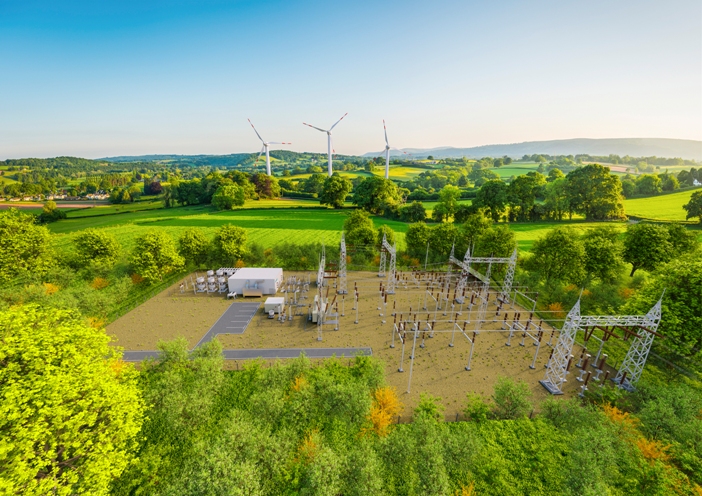With its new Unified Power Flow Controller, called UPFC PLUS, Siemens Energy is expanding the options for grid stabilization.
The UPFC PLUS will help system operators stabilize the grid by dynamically controlling the load flow in alternating-current grids. Easy to integrate into existing infrastructure, the UPFC PLUS improves the efficiency of today’s power grid while providing the grid stability and resilience required in the ever-changing energy landscape.
Power systems that are increasingly driven by fluctuating renewable energy sources can be kept stable using different measures. However, the options for expanding the network often entail major modifications to the existing infrastructure, therefore representing a big financial burden for transmission system operators. Compared with other grid stabilization technologies, the UPFC PLUS can be easily integrated into existing infrastructure and represents a cost-efficient solution for increased efficiency in the grid.
“Our new UPFC PLUS technology broadens grid operators’ capabilities to quickly respond to fluctuating power demand in order to support the integration of renewable energy, and ensures grid resilience and stability,” says Hauke Jürgensen, head of Large Transmission Solutions at Siemens Energy. The UPFC PLUS is a cost-efficient grid stabilization solution that will help grid operators master today’s and tomorrow’s challenges in a rapidly evolving energy landscape.”
Dynamic Control: The UPFC PLUS can balance load flow in the alternating-current grid within milliseconds, outperforming other flow management components. The UPFC PLUS is arranged as two voltage sources: one in parallel that controls voltage and one in series connected to the AC line. This means that it provides reactive power compensation, voltage control, and active power load flow control in one space-saving unit and ensures that the system can always tolerate an unexpected failure or outage of a single system component.
UPFC PLUS: Technical Structure
The UPFC PLUS comprises five main components:
- A back-to-back converter arrangement as a symmetrical monopole to achieve the required voltage level
- Siemens Energy’s well-known power modules that form the modular multilevel voltage-sourced converter (VSC)
- A series transformer that injects the voltage into the transmission line to either reduce or increase the current flow through the system
- The shunt transformer that controls the voltage and the infeed of reactive power
- A fast-bypass unit that protects the series side and ensures fast post-fault recovery
The solution is geared to the high-voltage level of electrical interconnected networks operated with three-phase alternating current and covers all voltage levels worldwide.

